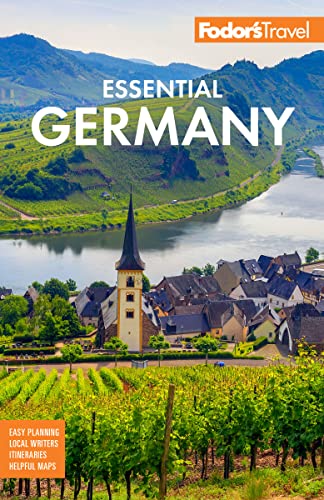German Sausages
The one thing you’re guaranteed to find wherever your travels in Germany take you: sausages. Encased meats are a serious business here, and you could spend a lifetime working your way through 1,500 varieties of German sausages, also known as Wurst.
The tradition of making sausages goes back centuries, both as a method to preserve food long before refrigeration and as the best way to use every last piece of precious meat. Sausage recipes go back for generations, and like most German cooking, sausage types vary from region to region. There’s also an abundance of ways to serve a sausage—grilled sausages are served up in a small roll, essentially just a sausage "holder"; Weisswursts come to the table after a gentle bath in warm water; cured sausages often are served sliced, while other cooked sausages are dished up with sauerkraut. Germans don’t mess around when it comes to their love for sausage, eating about 62 pounds of sausage per person each year.
Weisswurst Etiquette
Weisswurst is a delicate white sausage made with veal, bacon, lemon, and parsley. It's traditional in the southern state of Bavaria, where they are sticklers about the way to eat them. The casing is never eaten; instead, you zuzeln (suck) out the meat. Make a slit at the top, dunk it in sweet mustard, and suck out the insides. It’s all right to slit and peel it as well.
Frankfurter
In Germany a frankfurter isn't something that must be doused in condiments to make it palatable, like a subpar ballpark frank—instead you’ll immediately notice the crisp snap of the frankfurter’s skin and a delicious smoky taste. Frankfurters are long and narrow by design, to absorb as much flavor as possible during cold smoking. When served on a plate for lunch or dinner, they’re normally served in a pair, and you should eat them dipped in mustard, with your fingers. Frankfurters and other Würste also are served inside a small roll, called a Brotchen. The only condiment used is mustard, never sauerkraut or other toppings.
Thüringer Rostbratwurst
This bratwurst dates back to 1613 and it’s clear why it has stood the test of time: it’s one of Germany’s most delicious sausages. The Rostbratwurst is a mix of lean pork belly, veal, and beef, seasoned with herbs and spices. Most families closely guard their recipes, but often use garlic, caraway, or nutmeg. You’ll smell the scent of grilled Thüringer wafting through the streets because they’re popular at street markets and festivals.
Landjäger
This small, narrow, and dense rectangular sausage is sold in pairs. It’s cured by air-drying, so it resembles a dry salami in color and texture. Landjäger are made of beef, sometimes with pork, and red wine and spices. Historically, fieldworkers and wine-grape harvesters liked to eat these salty sausages. Landjäger keep well, so they’re a great snack to tuck in your backpack when you head out for a day of hiking in the mountains.
Blutwurst
Sometimes called Rotwurst (red sausage), Blutwurst is a combination of ground pork, spices, and—the key ingredient—blood, fresh from the slaughter. After it’s been cooked and smoked, the blood congeals, and the sausage takes on a dark hue and looks almost black. Depending on the region, it can be studded with bacon, pickled ox tongue, or potatoes. For most of its history Blutwurst has been considered a luxury item.
Bockwurst
This sausage got its name when hungry students ordered it with a round of Bockbier, a style of beer, in Berlin in 1889. The sausage came from a nearby Jewish butcher, who made it with veal and beef. Bockwurst is a thick sausage seasoned with salt, white pepper, and paprika, in a natural casing. It’s usually boiled and served hot, but it can also be grilled. It’s one of Germany’s most popular sausages, so you’ll find it on menus all over the country.




